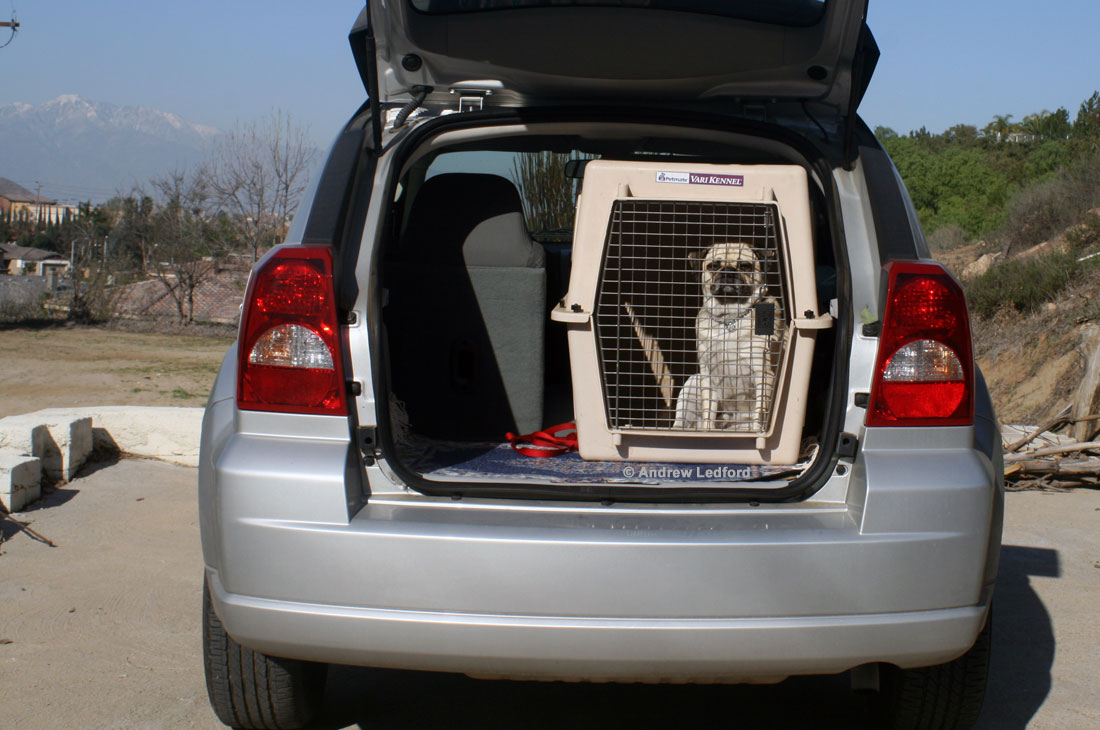Dog Training Crates for Housebreaking, Potty Training, and Behavior Management
Do you want to learn about the pros and cons of dog training crates? On this page you’ll learn about the best dog crates for housebreaking, potty training, and behavior management. Get the benefit of my many years of training experience by studying this website or you can hire me. If you’re interested in private dog training in California’s 562 and 714 area codes give me, Andrew Ledford a call 714-827-4058

Let me help you pick the best dog training crate for your puppy or dog.
How you control your dog at the beginning of housebreaking and potty training can have long term benefits that will affect your dog for the rest of its life? While crate training can be an essential part of potty training a puppy or adult dog, it has other uses as well. Crate training will set the foundation for future behavior management and can be crucial for correcting and/or living with many dog behavior problems.
Free Crate Training and Potty Training Book with Amazon Prime and Kindle.
My eBook Puppy Guide to Potty Training and Dog Care. Free to check out with Amazon Prime.
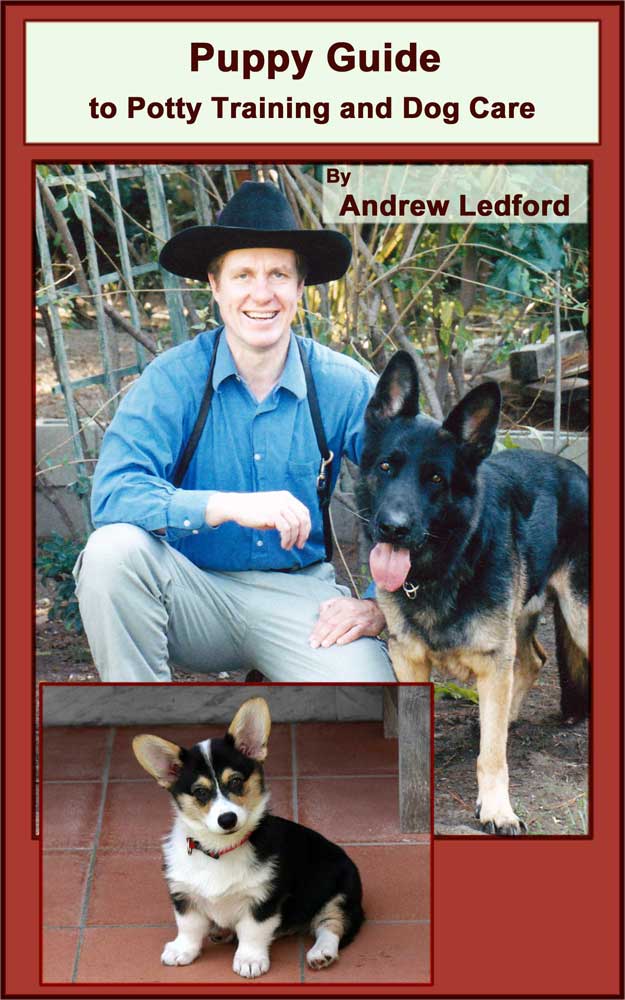
“Puppy Guide to Potty Training and Dog Care.”
If you are looking for free crate training and potty training information and you have Amazon prime and a Kindle device you can check out my short easy to read book from Amazon. Yes, you can get a complete dog and puppy potty training program with crate training tips and tricks when you get a hold of my “Puppy Guide to Potty Training and Dog Care” book from Amazon, and the best part for most people is, its free to checkout if you have Prime and a Kindle device.
If you already have my book there is additional information in this article that will help you pick the right crate for your puppy or dog.
What is crate training?
Crate training is:
- Teaching a dog to like spending time in its crate or to accept spending time in its crate
- Teaching a dog to settle and be calm in its crate
- Teaching a dog not to potty in its crate
- Teaching a dog not to howl or bark while in the crate
Some dogs accept their crate right away and some dogs need a structured training routine over a period of time.
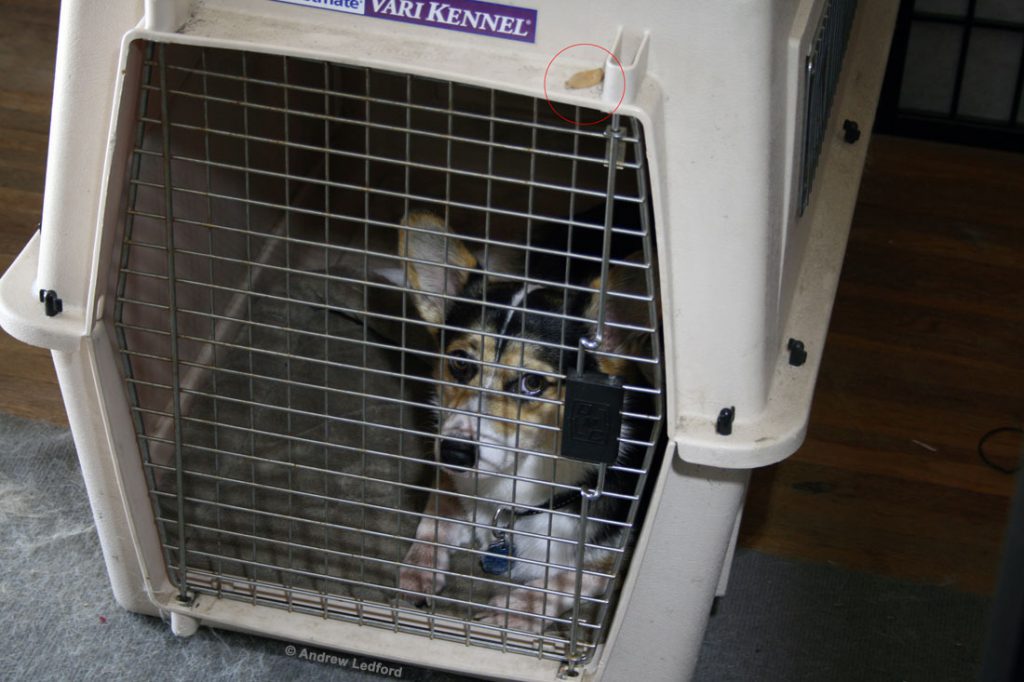
Kennel Training
You may hear crate training also referred to as kennel training. This is because one of the most popular pet crates uses kennel in their brand name. I always think of kennel training as teaching a dog to like being in a dog run or what I would call a kennel. Using a kennel run can also be very helpful for training and behavior management. I will talk more about this in future articles.
Confinement Training
All the tools we use to restrict access to the environment and control our dogs’ behavior can be thought of as a form of confinement. When teaching about specific tools and techniques it may be helpful to name each type of equipment we use. But for a more all-encompassing understanding it’s best to classify all the different kinds of barrier control and restraint we use for behavior management as Confinement Training.
Crate training is often the first and most important step in teaching a puppy or dog how to accept confinement.
Your dog’s crate is like a little house. Your dog needs to learn how to stay in its little house before it can be expected to handle the responsibility of staying in the big house.
Having a puppy or dog learn to accept confinement from the beginning of house and potty training can have long term benefits that will affect your dog for the rest of its life?

Wire Training Crate Used to Housebreak and Potty Train a Small Dog. Notice the extra snap on the top right that keeps the dog from opening the crate door.
Wire Training Crate Used to Housebreak and Potty Train a Small Dog. Notice the extra snap on the top right that keeps the dog from opening the crate door.
Puppy training crates
There are additional requirements for puppy crates compared to crates used for adult dogs. Often the puppy crate needs to be smaller so the pup will avoid soiling in its living area. If the crate is too big, many small puppies will potty in one part of the crate and sleep and in another.
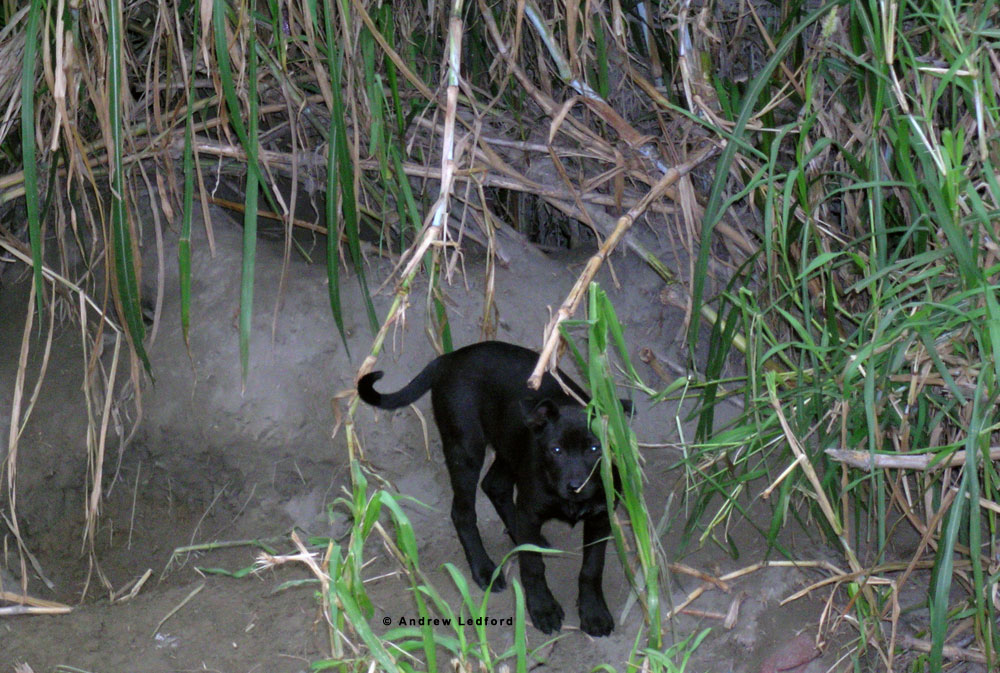
Going potty in one section of a big crate is similar to a wild/feral puppy going potty in the den or very close to it. I have observed puppies living in a wild state who also would eliminate in or very close to their den site. I used to go to Taiwan every year and watch the wild and feral dogs. In Taiwan I noticed that going potty close to the den site was more common in some packs than others. My Taiwan trips were a few years ago. Back then I would crawl into dog dens to see what the inside of a wild dog den was like. I was primarily interested in what they were eating. In addition to observing dietary clues I also had the chance to observe interesting dog behavior as well as other attributes of wild dog dens.
The potty training crate
I often hear people ask “what size crate is best for a young puppy?” Puppies need a crate that doesn’t give them too much room. The puppy at least needs enough room to stand up and turn around. The best solution for puppy potty training is to use a smaller crate when the pup is young and also get a larger crate the dog will grow into. Use the smaller puppy crate as the young dog’s primary crate and use the adult sized crate as a backup. The backup crate will come in handy when the puppy has a potty accident and you don’t have time to wash crates. If you are very good at watching your puppy and know it’s not going to have an accident you can also use the larger crate as a playpen.
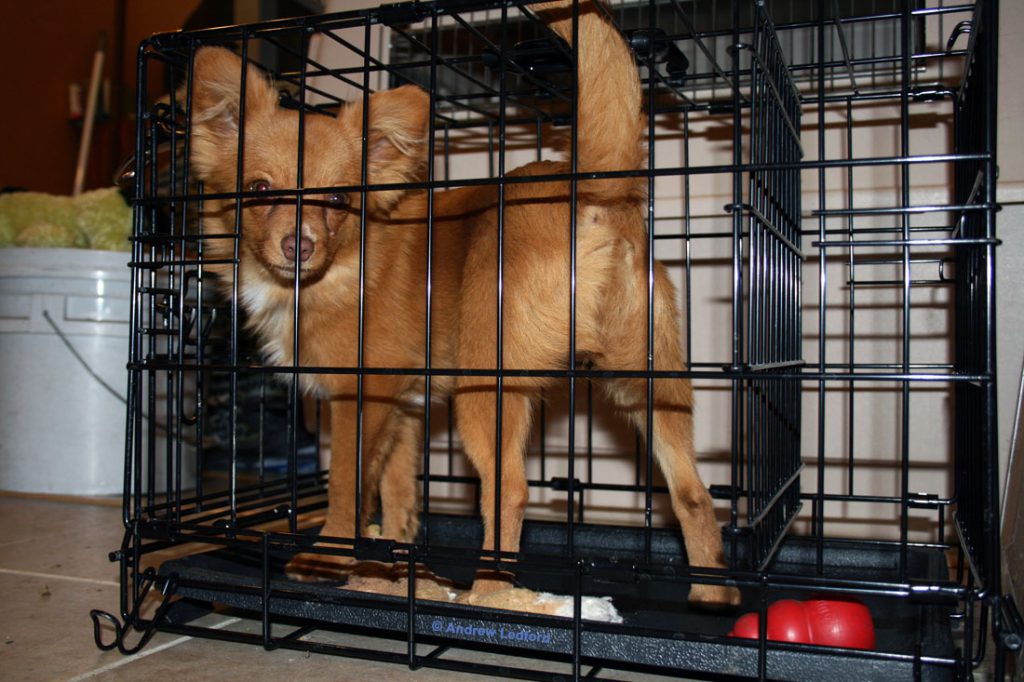
If you’re only using an adult crate for your puppy, it’s best if you divide it into a puppy sized compartment. I would do this for the backup crate as well. Some people recommend putting some kind of a box in the back to reduce the size. The drawback to using a cardboard or wood box is you’re giving the puppy an opportunity to learn how to chew and destroy those materials. It’s best to simply get a smaller crate. I think one of the better uses for a wire crate is for backup. It’s also easier to section off wire crates than a plastic crate.
Crate training is primarily a form of Confinement training.
Confinement training is how you build control for potty training and housebreaking. Some of the most common ways to get control for behavior management and potty training are with crate training, exercise pens, and puppy gates. However we can also use a dog bed and the leash to supplement these other tools.
Don’t expect your dog or puppy to figure out the potty training rules on its own. Without the proper guidance our dogs are much more likely to learn the wrong behavior. Until your dog is house trained, preventing potty accidents is up to you. It’s the handler/owner that is responsible for making sure the dog does not have a chance to have a housebreaking accident. You need to control the dog until it can control itself. Just as there are several methods of dog training, there are also several ways to confine and control the dog.
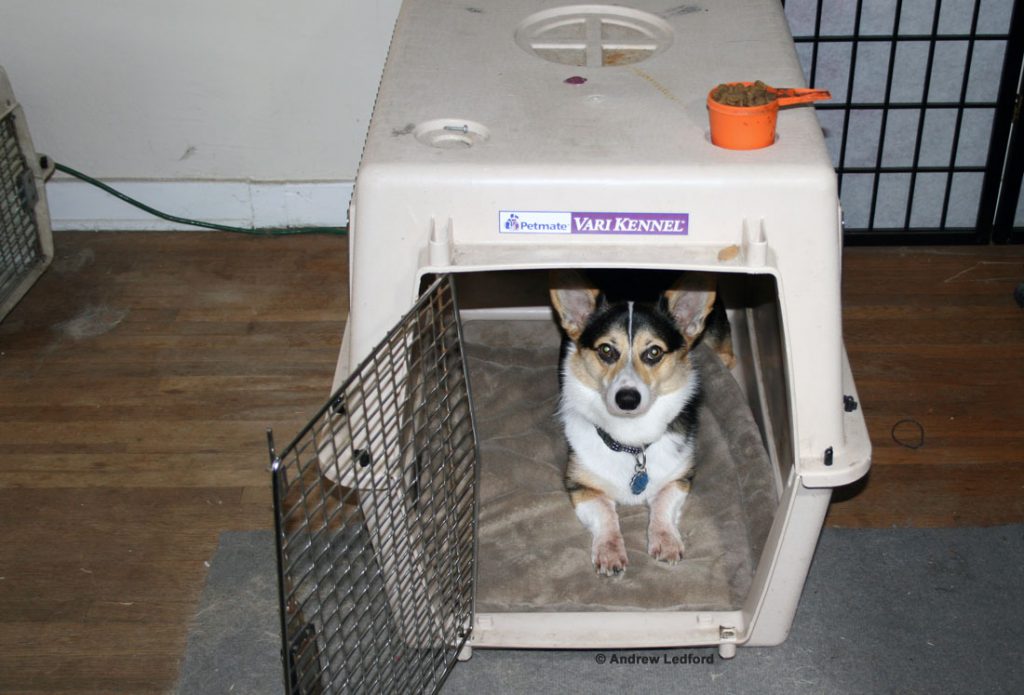
For most housebreaking and potty training programs I use these tools for control and confinement.
- Dog Crates and crate training
- Exercise pen (puppy play pen, ex pen)
- Puppy gate
- Dog Leash
- Dog bed
Whenever possible work with your dog’s natural tendencies and behavior.
My housebreaking plan starts
by using the natural built-in traits of the dog. Not all dogs, but most dogs will avoid soiling their immediate living area. It starts first with their sleeping area and expands to a larger living area. The instinctive hygiene trait will be used and accentuated in the housebreaking/potty training program. Most dogs can develop very good control over their elimination habits at a fairly young age. Depending on the size of the dog, its breed, activity level, and temperament, most dogs can sleep through the night without getting up between the ages of 10 to 16 weeks. In general small dogs and very active dogs tend to be harder to housebreak and potty train. Housebreaking a dog is done by enhancing the hygiene trait through training.
Crate training and housebreaking
I recommend most dogs start crate training when they first move into a new home. When I used to do Board and Train programs the first thing I taught the dog was to like being in its crate. Generally I would stock up on food so I didn’t need to go to the store and then spend two days getting the dog accustomed to going into its crate, calmly staying in the crate, and sleeping through the night. At the same time I would start to establish the daily potty training rhythm or cycle.
Even people who at first don’t want to use a crate often appreciate its benefits. Most dogs take quite nicely to their crates. For the average dog the crate becomes a place of comfort and security. For dogs that really dislike confinement we need to do some extra training. These more difficult dogs may need the help of a professional dog trainer.
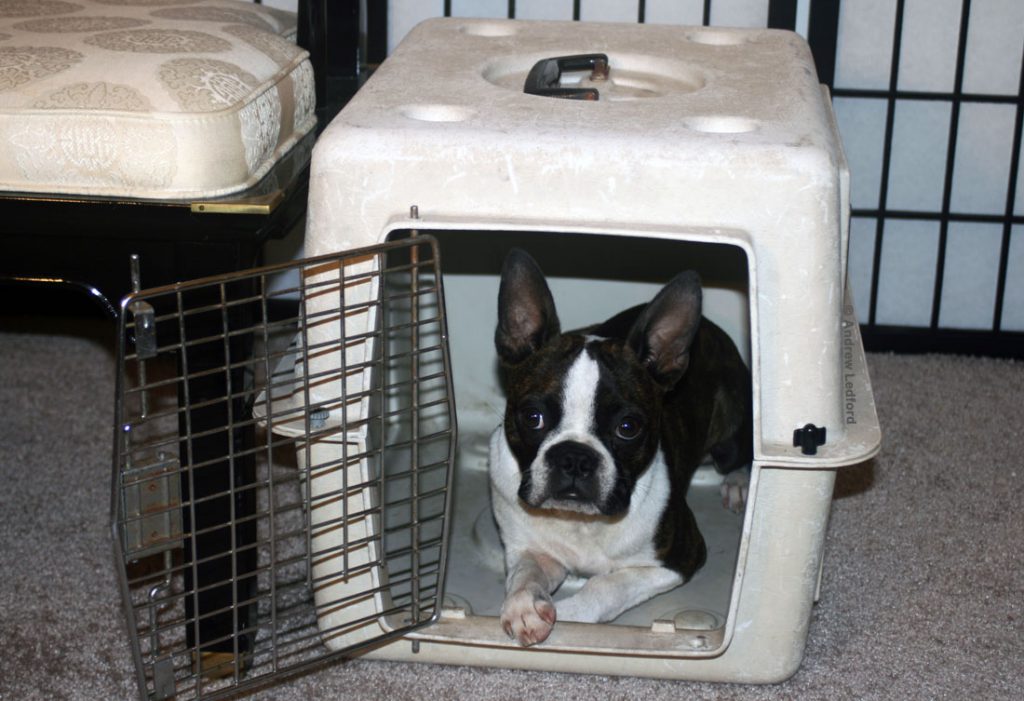
Fortunately crate training has become quite popular over the years and is now a standard part of dog ownership and care. A side benefit is it accelerates housebreaking and potty training. It’s becoming more common for pet owners to understand the majority of dogs feel quite comfortable in their crates. Puppy parents usually have an easier time overcoming emotional objections to the crate when they see their dogs willingly accept crate training. The majority of people who crate train their dogs soon realize the immense value of crate training. Training a dog is beneficial to the dog’s well-being and to the owner’s sense of emotional stability. If your dog is behaving nicely it is easier to not get frustrated, angry, or overwhelmed. I have many people tell me they can’t imagine living with their dogs without using a crate.
There are two types of dog crates that are practical to use for housebreaking. The first is the traditional hard crate. These are usually made of plastic. The second type is the collapsible wire crate. They each have their advantages.
Hard dog training crates (Plastic dog crates)
I prefer the traditional hard crates. The best hard crate for a dog that’s already crate trained are those made of metal. The best crates for beginning crate training are plastic crates with a removable top section. For most of my life the traditional plastic dog crate has been a standard piece of furniture in my house. And they stack if you have more than one. It’s not always best to put a second dog in a stacked crate, but that feature can come in handy. This is especially true if you have an extra crate or two on hand so you don’t need to clean crates when your pup has an accident at night.
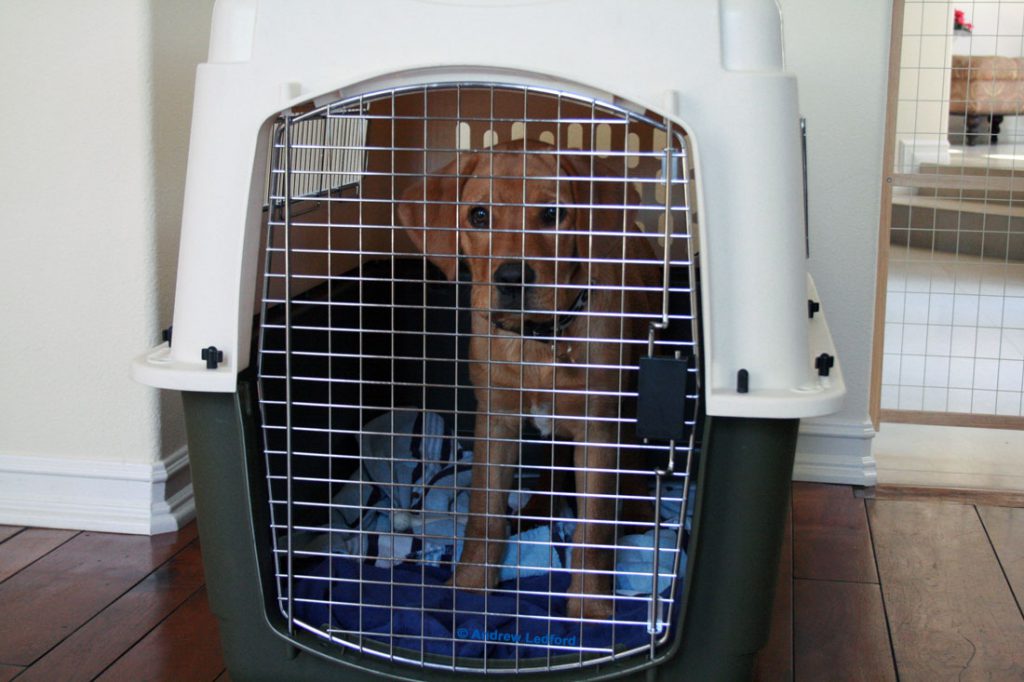
I do recommend that you have more than one crate when house training a puppy. It’s no fun washing a crate out at 2 AM on a cold winter morning. Crate cleaning in the wee hours is even worse if you need to get up and go to work a bit later. When working with clients I try to make the puppy or dog’s transition into the new house as smooth and hassle free as possible.
Crates with hard sides also offer more protection than other types of crates. This is something those of us who live in earthquake country may want to consider. After the last big earthquake I started having my dog sleep in his crate. Before this he liked sleeping in front of my bookshelves. I would have been devastated if my bookshelves would have fallen on him. But in his well-made crate he was sheltered from falling furniture.
I also recommend using an airline approved crate as they need to meet certain minimum safety requirements.
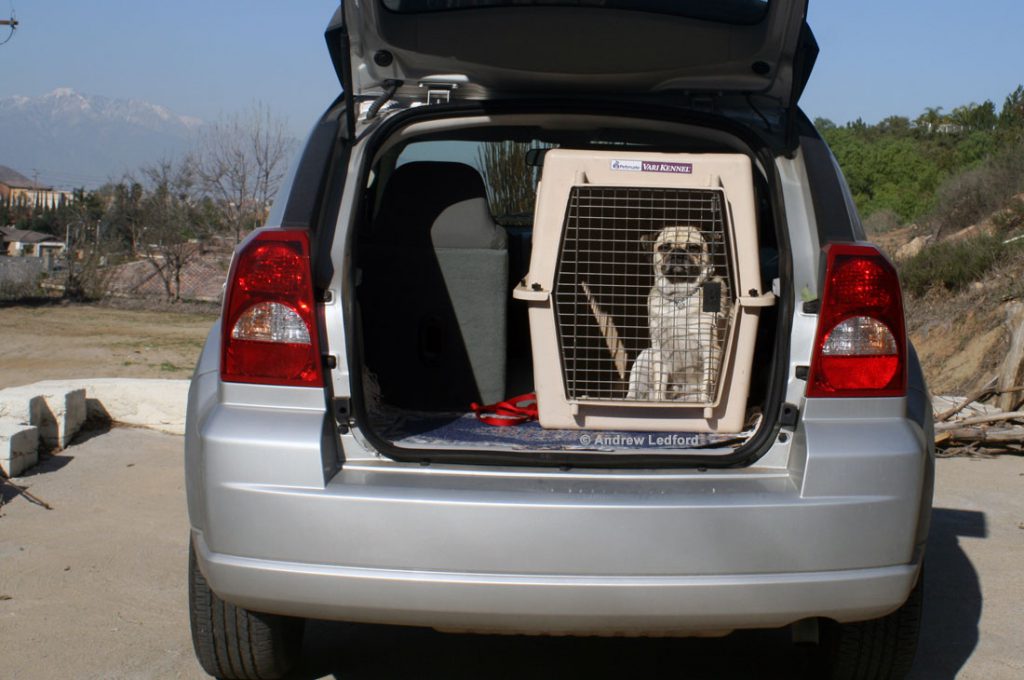
Hard sided crates also provide a little more protection when transporting the dog. This is true for both the dog and the vehicle. I have transported more dogs than the average person and when a dog gets sick or goes potty in the car it can cause a big mess. The hard sided crates will keep the mess contained better than a wire crate. This often gives you time to get to a safe place to clean up before you get back on your way.
Finally I think a hard crate makes a dog feel more secure. Most dogs like being in a safe place away from the active household traffic. This is also safer for the people in the house as well. No one wants to step on or fall over their dog at night. When the dog is sleeping in its crate it increases the safety of everyone in the house. The exception to this is if you have your dog for security and its job is to patrol the house and keep intruders at bay.
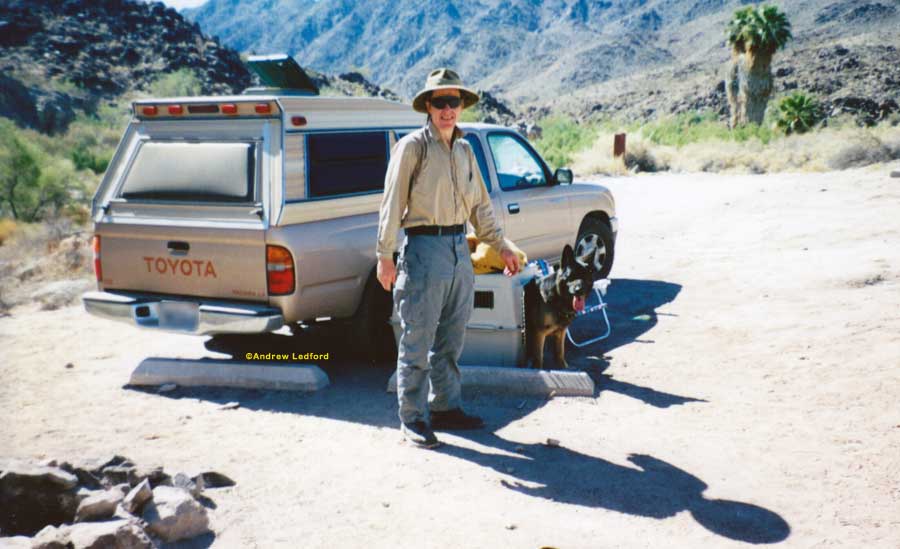
Wire dog crates
The wire crate is convenient and you can transport the crate easier than those with hard sides. They also make great backup crates. Wire dog crates usually take up a bit less room than a plastic crate. This is because most plastic crates have lip or seam where the top and bottom parts meet and connect. This feature makes wire crate preferable for short stays in confined living environments, such as small travel trailers and campers. For car camping I still prefer a plastic crate.

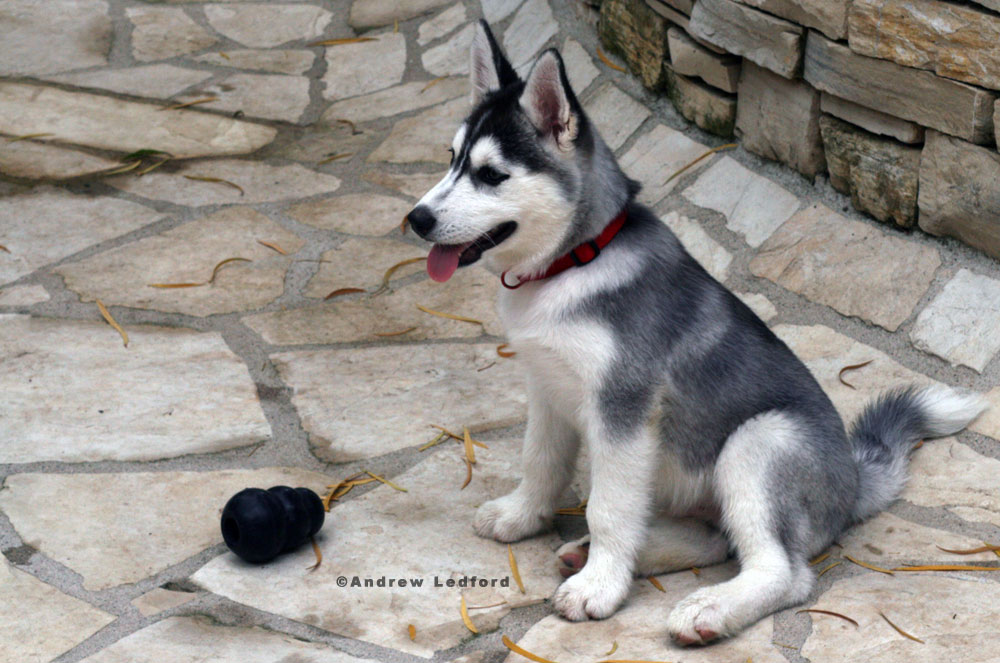
A large wire crate can also make a very good puppy playpen and help transition into playpen training at a later date. Using a large wire crate inside as an indoor playpen can also help differentiate an indoor wire living area from an outdoor wire potty pen.
Putting a blanket over the dog crate and other forms of covering the wire dog crate.
You can often make a dog feel more secure in a wire crate by covering or partially covering the crate. It is common to cover a wire crate with a blanket or towel. You can also use wood as a cover without the added worry of having the dog chew the blanket. Another tip is to put the wire crate next to a wall for added comfort and security. When I use a wire crate I usually have a box on top to hold the dog’s training equipment and personal items and also use a piece of wood for the sides. I do like having a wire crate on hand, but I don’t use them as much as the traditional hard sided crates.
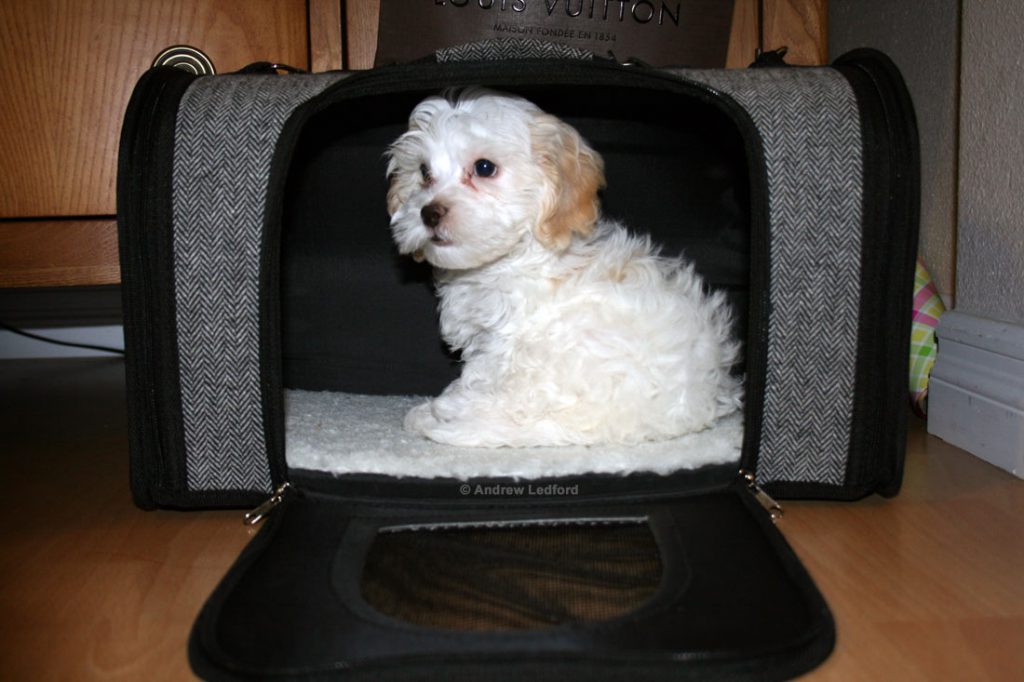
Soft cloth dog crates
Soft dog crates (cloth dog crates) usually do not make good dog training crates. Soft dog crates do have their uses but they usually cause more problems when used in the beginning stages of training.
Call 714-827-4058 today to get more information about my in-home dog training programs.
We provide training services to North Orange County, Long Beach, the 562 Gateway Cities area, and Part of San Gabriel Valley. I do offer convenient customized In home training to a large portion of Southern California’s most dog friendly communities.
Andrew Ledford
714-827-4058

